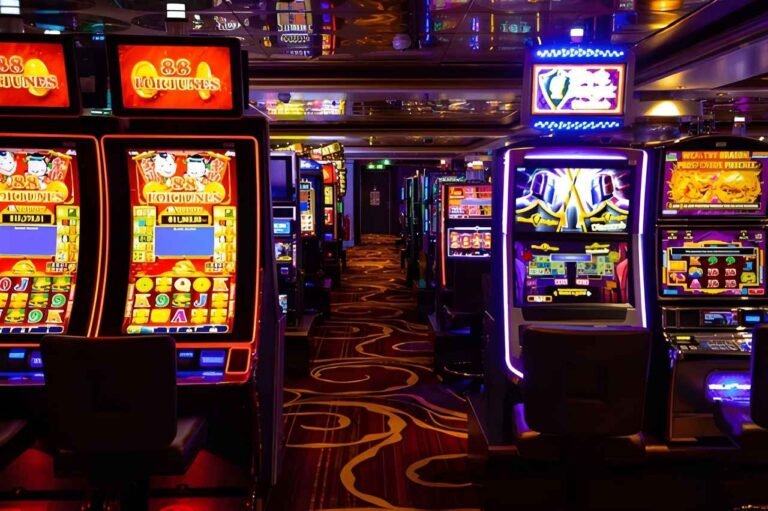
Sports centers focus on physical activity and community building. But the digital world offers valuable lessons about keeping people engaged.
Online gaming platforms excel at user retention and satisfaction, principles that translate well to fitness facilities. If you manage a sports center or recreation facility, you compete for people’s time and attention.
Gaming platforms face the same challenge in a crowded entertainment market. They’ve developed strategies that work across industries.
Understanding these approaches helps you enhance the member experience and improve retention at your facility.
Creating Accessible Entry Points
Gaming platforms remove barriers to participation. New users can start playing within minutes, without the need for complicated setup processes.
Sports facilities often create unintentional obstacles. Complex membership forms, unclear pricing, or intimidating environments discourage newcomers. Simplifying these elements increases participation just like streamlined gaming interfaces boost player engagement.
Barriers That Drive People Away:
- Confusing registration processes
- Unclear facility rules and etiquette
- Intimidating equipment or spaces
- No clear beginner pathways
- Limited staff guidance for new members
Gaming teaches us that the easier you make entry, the more people will try your service. First impressions matter in both industries.
The Power of Progressive Challenges
Online games start easy and gradually increase difficulty. This progression keeps users challenged without overwhelming them.
Fitness programs can adopt this same structure. New members need achievable goals that build confidence. As they improve, you can incorporate more complex activities or higher-intensity options.
| Skill Level | Gaming Approach | Sports Facility Equivalent |
| Beginner | Tutorial levels | Intro classes and orientations |
| Intermediate | Standard gameplay | Regular programs and leagues |
| Advanced | Hard modes | Competitive teams and events |
| Expert | Special challenges | Elite training and tournaments |
This progression framework works because it meets people where they are. Nobody feels lost or bored when the challenge matches their ability level.
Immediate Feedback Systems
Gaming platforms provide instant feedback on every action. You see scores, achievements, and progress bars constantly.
Sports facilities often lack this immediate response system. Members don’t always know if they’re improving or using equipment correctly.
Adding feedback mechanisms increases motivation and proper technique development. Platforms that blend entertainment with engagement, like Japanese rock inspired gaming experiences, show how themed feedback systems can make activities more memorable and exciting.
Effective Feedback Methods:
- Digital tracking of workouts and attendance
- Visual progress indicators in common areas
- Immediate coaching corrections during activities
- Milestone celebrations for achievements
- Peer recognition systems
When people see their progress, they stay committed. The data proves they’re moving forward even when personal improvement feels slow.
Building Community Through Competition
Gaming platforms create social connections through leaderboards and team challenges. Players compete and cooperate simultaneously.
Sports centers have natural advantages here but don’t always capitalize on them. Organized competitions, team events, and social activities strengthen member bonds. These connections keep people coming back even when motivation dips.
| Community Feature | Implementation Difficulty | Member Impact |
| Leaderboards | Low | Medium |
| Team challenges | Medium | High |
| Social events | Medium | High |
| Buddy systems | Low | Medium |
| Achievement sharing | Low | Medium |
The goal isn’t to make everything competitive. Some members prefer personal goals over public rankings. Offering both options accommodates different personality types and motivations.
Rewarding Consistent Participation
Games reward regular play through daily bonuses and loyalty systems. This approach encourages habit formation.
Sports facilities can implement similar reward structures. Regular attendance unlocks benefits such as discounted services, priority booking, and exclusive access. These incentives turn occasional visitors into committed members.
Proven Reward Strategies:
- Attendance streaks with escalating benefits
- Points systems for various activities
- Tier-based memberships with perks
- Exclusive access to new programs
- Recognition in facility communications
Rewards don’t need to be expensive. Recognition and small perks often motivate as effectively as major incentives.
Making Data Work for Members
Gaming platforms track everything and use that data to personalize experiences. They recommend games based on your preferences and playing history.
Sports facilities collect member data but rarely use it effectively. Analyzing attendance patterns, preferred activities, and progress metrics lets you offer personalized recommendations. This customization makes members feel valued and understood.
Applying Digital Lessons to Physical Spaces
The gaming industry succeeds by removing friction and adding enjoyment. Every design choice prioritizes user experience above all else.
Sports facilities should adopt this user-first mindset. Walk through your facility as a new member would.
Identify moments that are confusing, intimidating, or unclear processes. Fix these issues systematically. Small improvements compound into significantly better member experiences.
Moving Forward with Better Engagement
Online gaming platforms prove that engagement isn’t accidental. It results from deliberate design choices focused on user satisfaction and retention.
Your sports facility can adopt these same principles without compromising authenticity or community focus. The goal isn’t making fitness feel like a game. It’s removing obstacles and adding support systems that help people succeed.
When members achieve their goals and enjoy the process, they stay committed. This benefits their health, your facility’s success, and the broader community you serve.
The techniques work because they address fundamental human needs for progress, recognition, and connection.






